NESP researchers are tackling this restoration challenge at the Ranger uranium mine, producing new knowledge about the possible impacts on fish and riparian vegetation from potential leachate into creeks, and developing guidelines and targets for the return of local native fauna and flora to the site.
Ranger uranium mine lies entirely within World Heritage-listed Kakadu National Park. In January 2021, processing operations at the Ranger uranium mine will cease and rehabilitation works are planned to be completed by 2026. The rehabilitation must “establish an environment similar to the adjacent areas of Kakadu National Park such that … the rehabilitated area could be incorporated into the Kakadu National Park” (Commonwealth of Australia 1999).
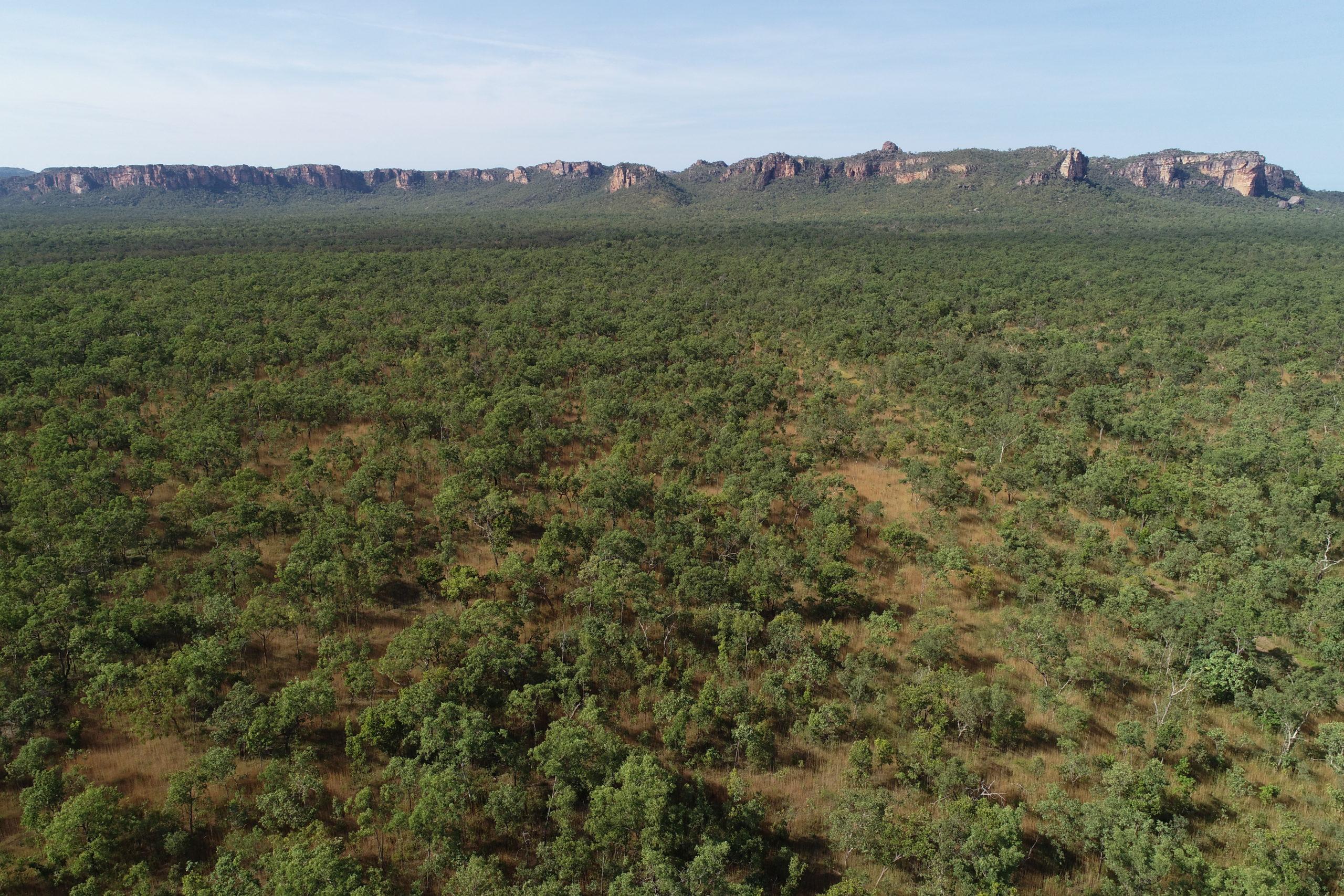
Aerial view of Kakadu National Park near Ranger uranium mine. Photo by the Supervising Scientist Branch.
Over the mine’s lifetime, the Australian Government’s Supervising Scientist Branch (SSB) has undertaken a comprehensive monitoring and research program to ensure that mining operations did not adversely affect the surrounding environment and the people who live within it.
Over the 40 years that we’ve been collecting environmental data we’ve been able to demonstrate that the environment, including Kakadu National Park, has remained protected. It’s equally important now that the environment remains protected over the very long term.
– Keith Tayler, Supervising Scientist, Department of Climate Change, Energy, the Environment and Water
Scientific collaboration with the Australian Government’s National Environmental Science Program has played an essential role in informing the successful rehabilitation of Ranger and the long-term protection of Kakadu, Mr Tayler says. In 2015, the Alligator Rivers Region Technical Committee asked SSB and mine operator Energy Resources Australia Ltd (ERA) to identify the key knowledge needed to ensure successful rehabilitation of the site, and to better understand and mitigate the risks to the off-site environment.
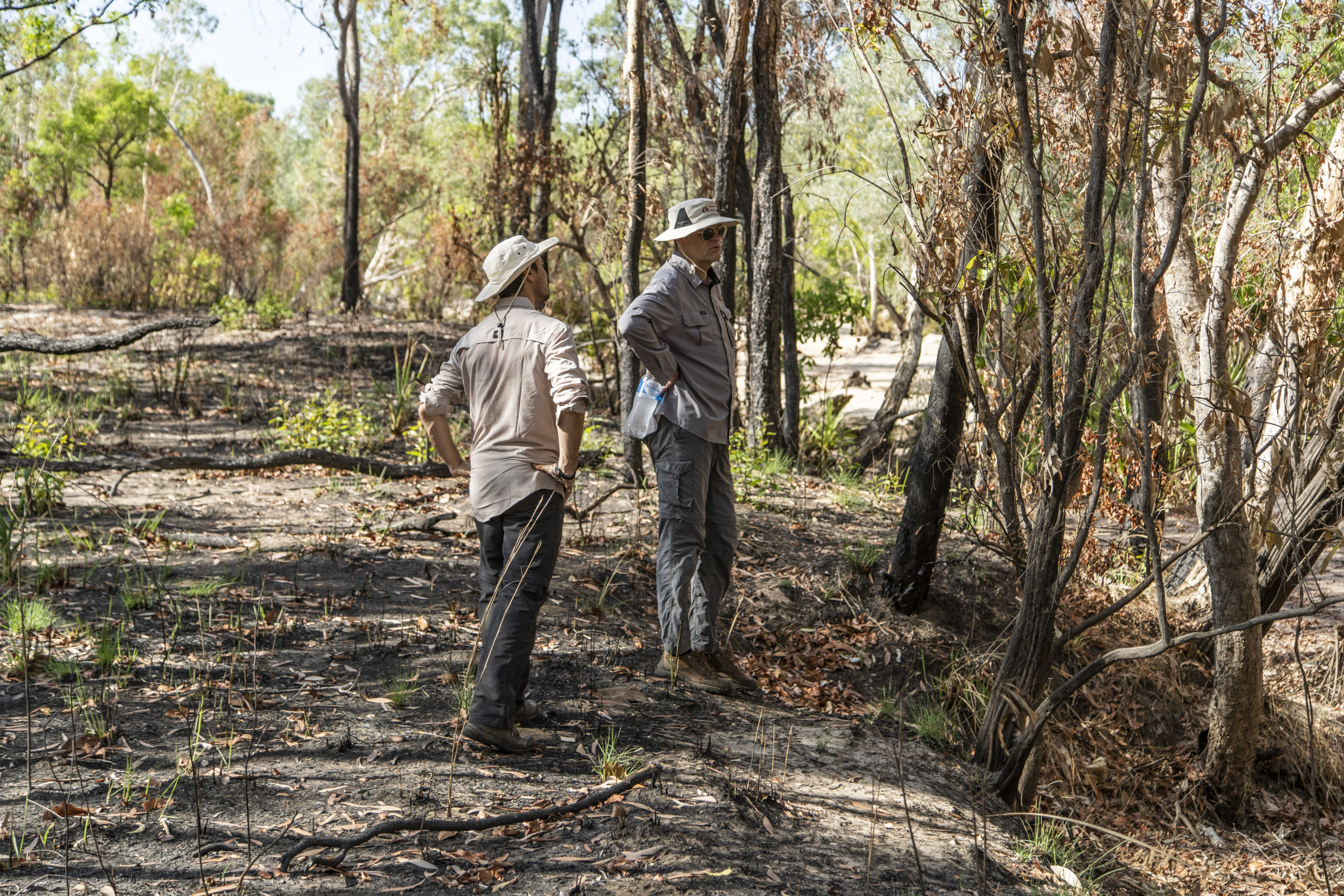
Professor Lindsay Hutley and Dr Clem Duvert assessing riparian vegetation along Magela Creek. Photo by NESP Northern Hub.
One knowledge gap was the potential impact of elevated levels of magnesium sulfate (MgSO4) leaching from mining waste rock into Magela Creek, either through overland or groundwater flows.
There is a risk that a salty plume of water laden with MgSO4 could be a barrier to fish migration from the escarpment billabongs into Magela Creek and its floodplain, and then back again, as the wet season waxes and wanes.
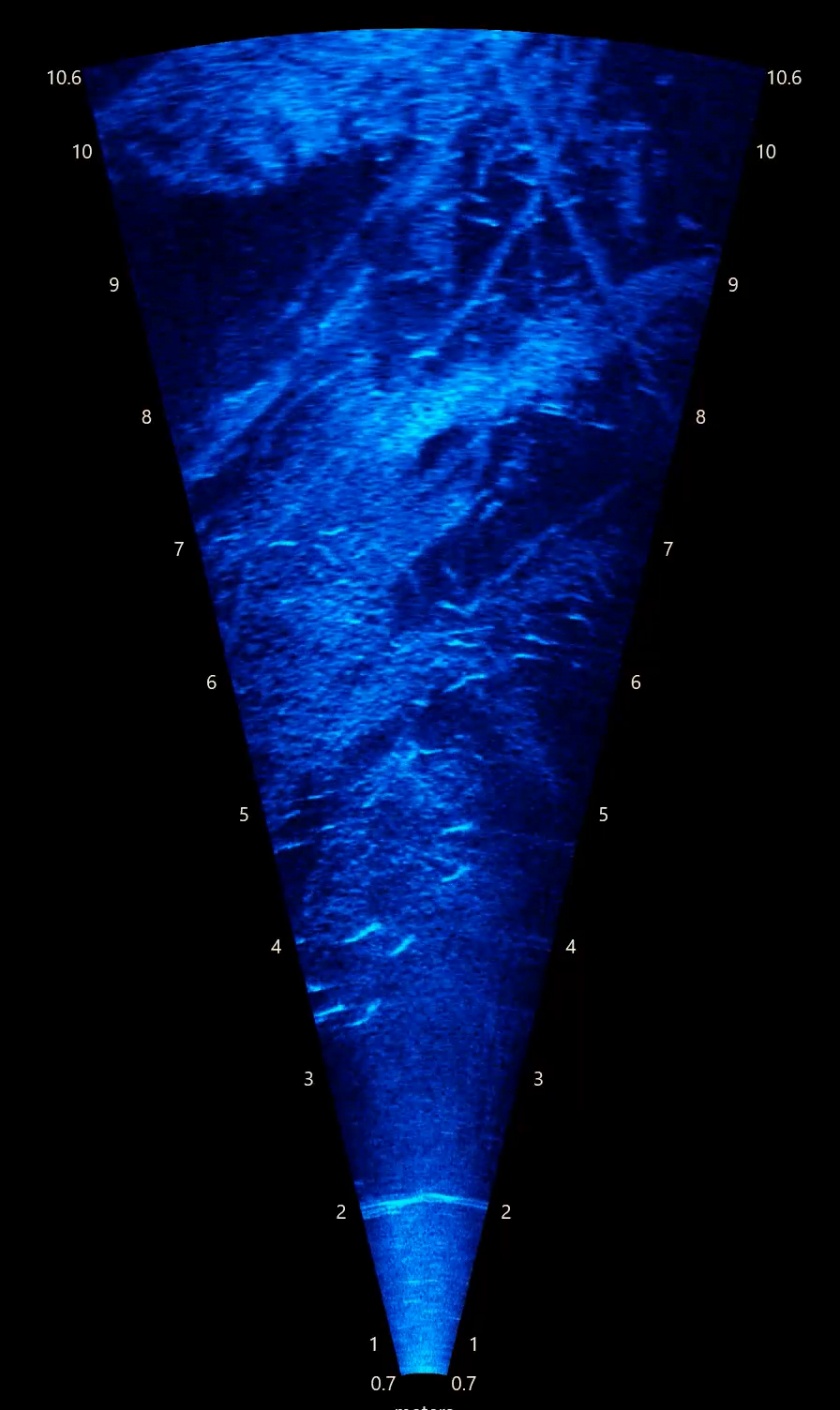
New sonar technology has enabled the fish sensitivity team to build a greater understanding of the whole fish assemblage. Photo by David Crook.
Charles Darwin University (CDU) Associate Professor David Crook developed a conceptual model of how fish move through Magela Creek, based on data collected from sonar imagery of fish assemblages and acoustic tracking of individual fish. The model will help SSB understand the conditions under which fish migrate and how salty run-off could affect this.
Mr Tayler says that the information will be used as part of SSB’s impact assessment, based upon a model of the water quality in Magela Creek for hundreds of years after rehabilitation.
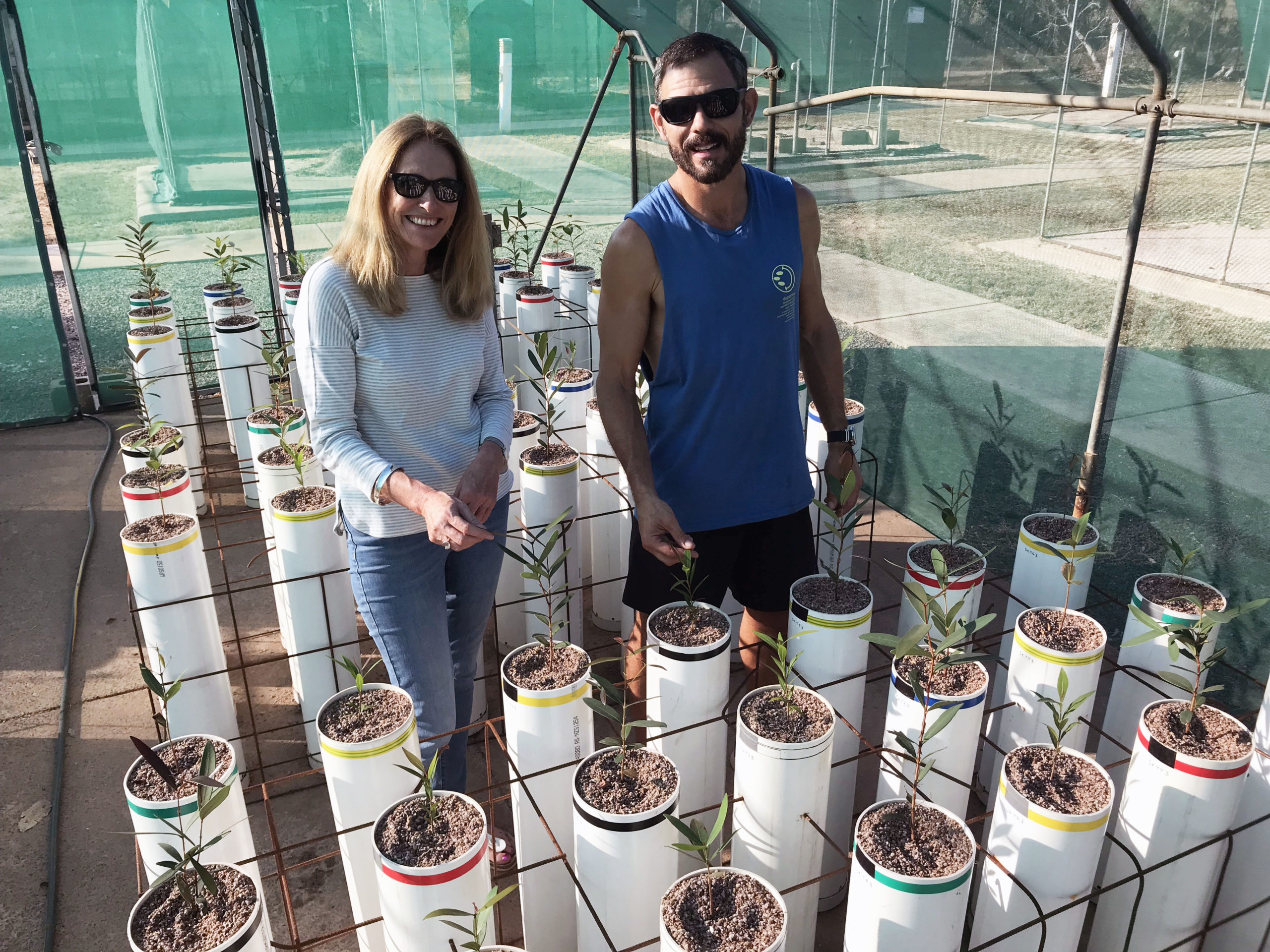
Associate Professor Sam Setterfield (UWA) and Adam Bourke (CDU) in the greenhouse at CDU. Photo by Lindsay Hutley.
There was also little knowledge of the sensitivity of riparian vegetation to elevated concentrations of MgSO4 in soil and groundwater. Experimental trials on how seven of the most common species of riverbank tree respond to MgSO4 are being undertaken at The University of Western Australia and at CDU, under the supervision of Associate Professor Samantha Setterfield and Professor Lindsay Hutley, respectively. Results to date suggest that impact on sapling growth may be limited, although the trials are ongoing.
The work that has been done by NESP is critical in ensuring that we have an understanding of the sensitivity of all key vegetation species.
– Keith Tayler
Another knowledge gap was how to set appropriate targets for the return of animals to the rehabilitated site as habitat develops over time.
We’re looking to develop criteria that will give us confidence that the environment that’s created at Ranger will be suitable for the range of fauna that typically would inhabit the national park.
– Keith Tayler
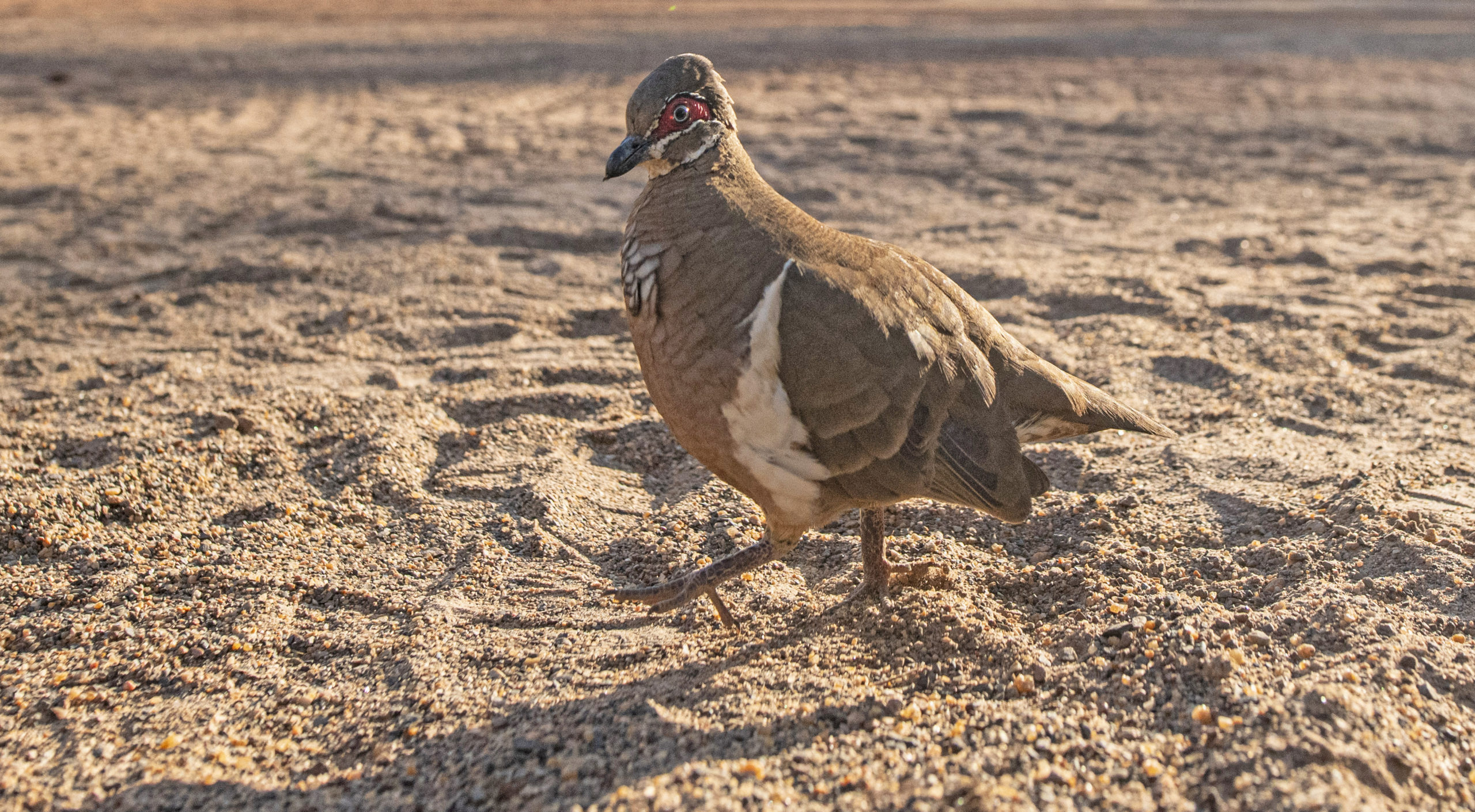
The project identified 50 vertebrate species present in the lowland woodlands of northern Kakadu that can be detected with high confidence using standard survey methods, including the partridge pigeon. Photo by NESP Northern Hub.
CDU’s Professor Alan Andersen collaborated with scientists from the NT Department of Environment and Natural Resources (DENR) to develop five specifications for fauna rehabilitation standards at the site. The specifications were based on data collected over decades from the DENR’s Kakadu-based Three Parks Fire-plot Monitoring Program.
The structured approach used to recommend fauna rehabilitation standards for the Ranger mine is transferable to other hard-rock mine site rehabilitation projects, and to restoration projects more generally. The expected incorporation of the Ranger Project Area into Kakadu National Park means that rehabilitation standards for the site will likely differ from those set for other mine sites. Although the particular specifications of the rehabilitation standards will vary on a project-by-project basis, the principles used to develop a robust and meaningful set of standards will be the same.
The high standard of ecosystem restoration required at Ranger is not something that would be typically expected of a hard rock mine, explains Mr Tayler. It presents unique and interesting scientific challenges.
The Northern Hub has done some really fundamental work for us, which will help us greatly in our assessment of the likely impacts to the environment during rehabilitation.
– Keith Tayler
References
Research outputs
Scientific paper
Reports
Video
Factsheets
Dataset available on request
Project webpages
Attributions



